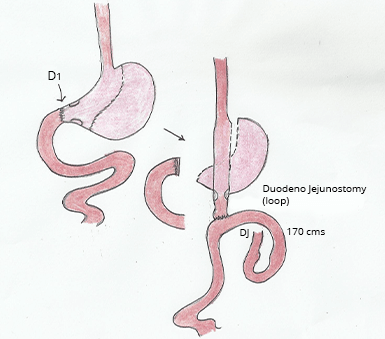In duodenojejunal bypass, the size of the stomach is reduced according to the patient's body weight, and the first part of the small intestine (duodenum) is bypassed along with 200 cm of the jejunum during redirection surgery. In this operation, the 1st part of the duodenum is connected to the shunted part of the jejunum. This operation has the obvious advantages of Roux-en-Y gastric bypass and does not cause significant weight loss and dumping.

Laparoscopic duodenojejunal shunting
This operation has a similar hormonal mechanism to iliac interposition. After this operation, ghrelin levels decrease as the gastric fundus is removed. GLP 1 and YY peptide hormones increase as food rapidly reaches the small intestine. These hormonal changes reduce appetite and increase energy expenditure.
Ghrelin and anti-incretins act against insulin. As the levels of these hormones decrease, the effectiveness of insulin increases. These changes lead to resolution/remission of diabetes.

